මහනුවර

Ancient kingdom in the high central mountains

Up in the mountains of central Sri Lanka is the ancient city of Kandy, as important now as the second city of Sri Lanka, as it was back in the 15th century when it was known as the Kingdom of Kandy. Set amongst the hills and tea plantations around the edge of Bogambara lake, the city is a draw for its scenery and history, including the Temple of the Tooth, one of Buddhism’s most revered sites. Being at an elevation of around five hundred metres, the climate is a little cooler than the coast and offers a slight respite from the tropical heat.
Upon arrival at Negombo airport for Colombo, I jumped straight in a minibus and we chugged our way up the mountain roads to Kandy a few hours away. This gave me all afternoon and an evening to explore the town, easily done on foot plus the odd tuk-tuk. I stayed in a small hotel/hostel on a hill to the south east of the lake, which served a very nice multi-course curry on its rooftop terrace. Getting back to Colombo was by way of the six AM train, and seated in the observation car at the back there were great views over the jungle and mountains as the sun came up.
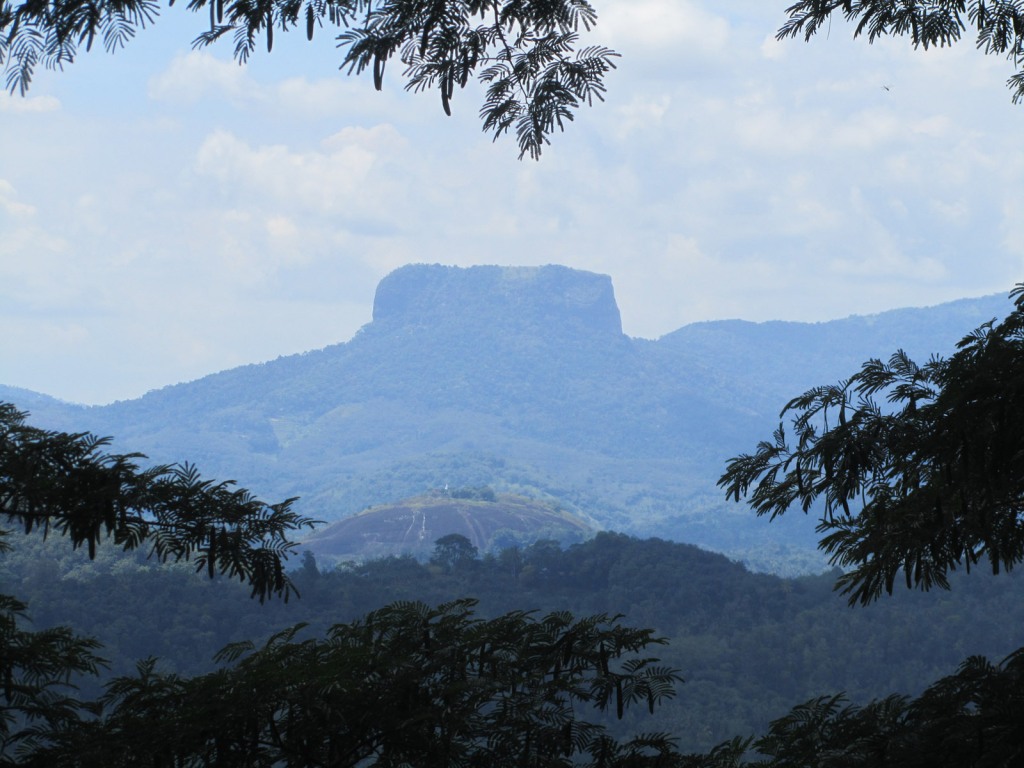
Bible Rock or Batalegala as it is known in Sinhala, dominates the skyline on the way up to Kandy. Its etymology is obvious enough, and it reaches up to around 670 metres elevation.
We stopped at this colourful fruit stall on the way up the mountain road. It also sells colourful toy cars.
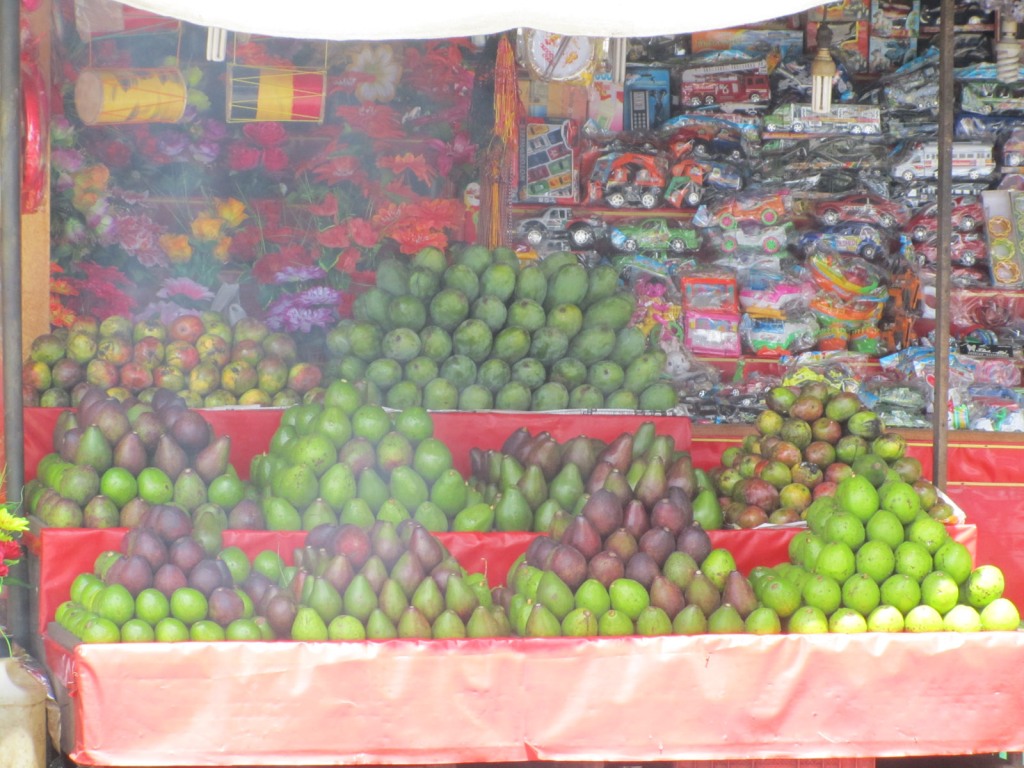
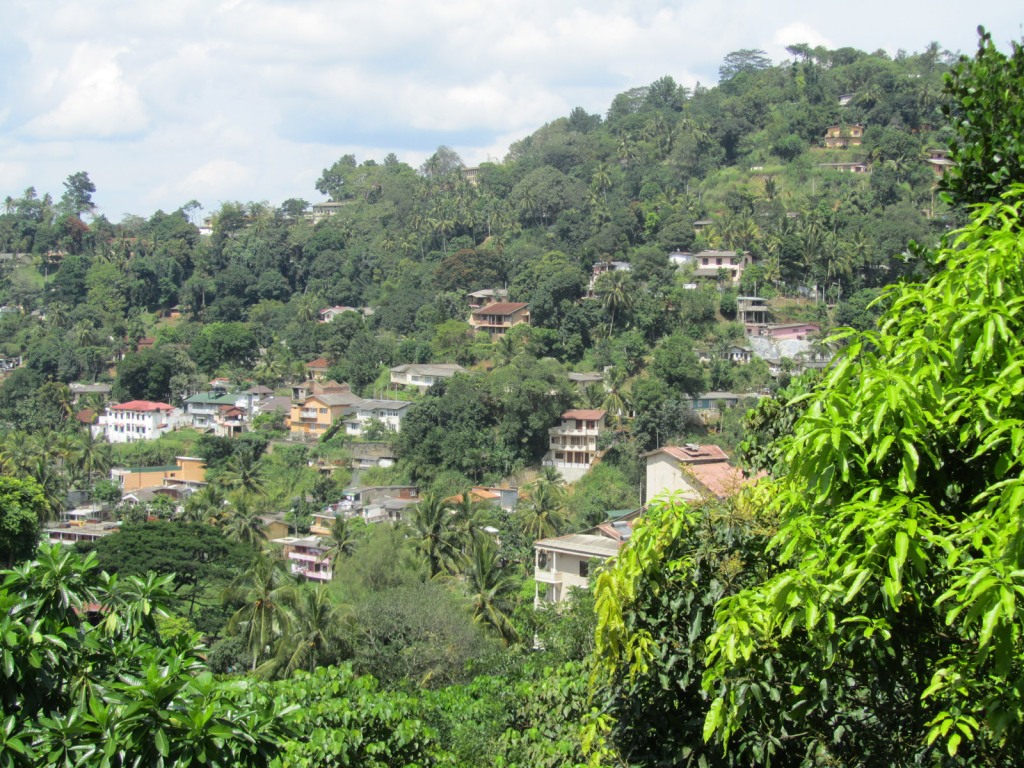
The view from the top of my hotel, the appropriately named Kandy View Hotel. It was borderline hostel-standard but like everywhere in Sri Lanka, it served excellent food.
The city is built around Bogambara Lake, also known as Kandy Lake, with the Temple of the Tooth to the north, and a very rectangular island in the middle. The lake is manmade, and legends abound of the red-roofed bathing station being connected to the palace by a secret tunnel, for use by the king’s harem. It was pleasant to walk around on the relatively quiet footpaths.
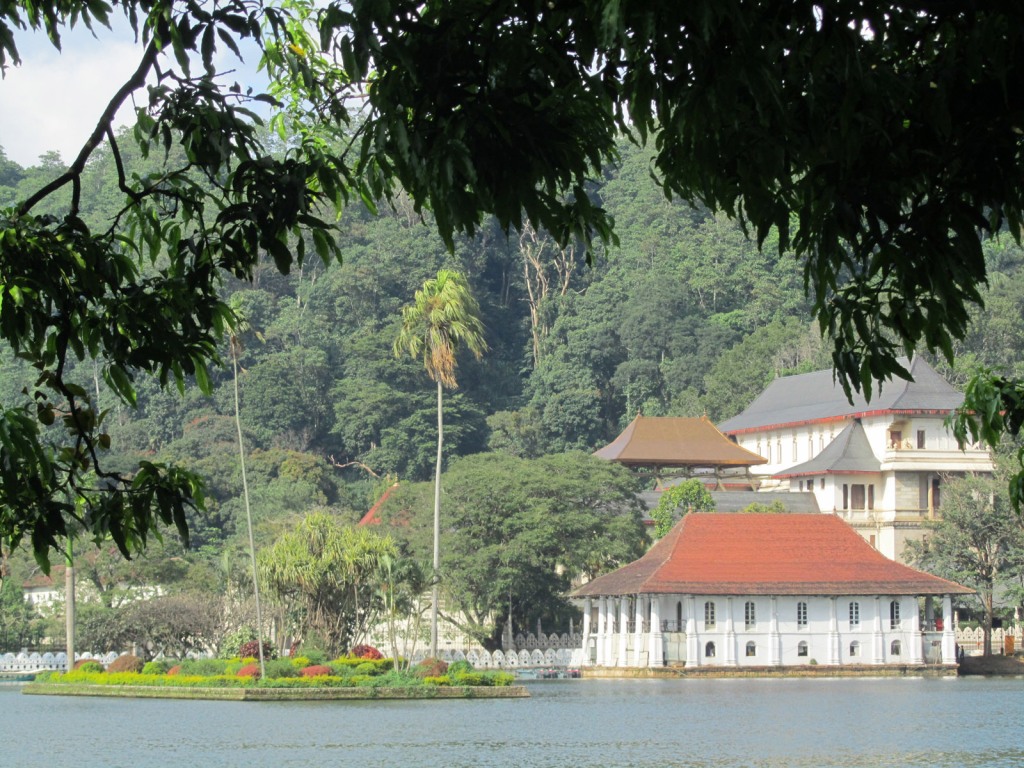

A local monk on his way home from the temple, along the dam which holds back the lake.
A British post box is a clear sign of the previous colonisation of Kandy, which began in 1815 but was strongly resisted.
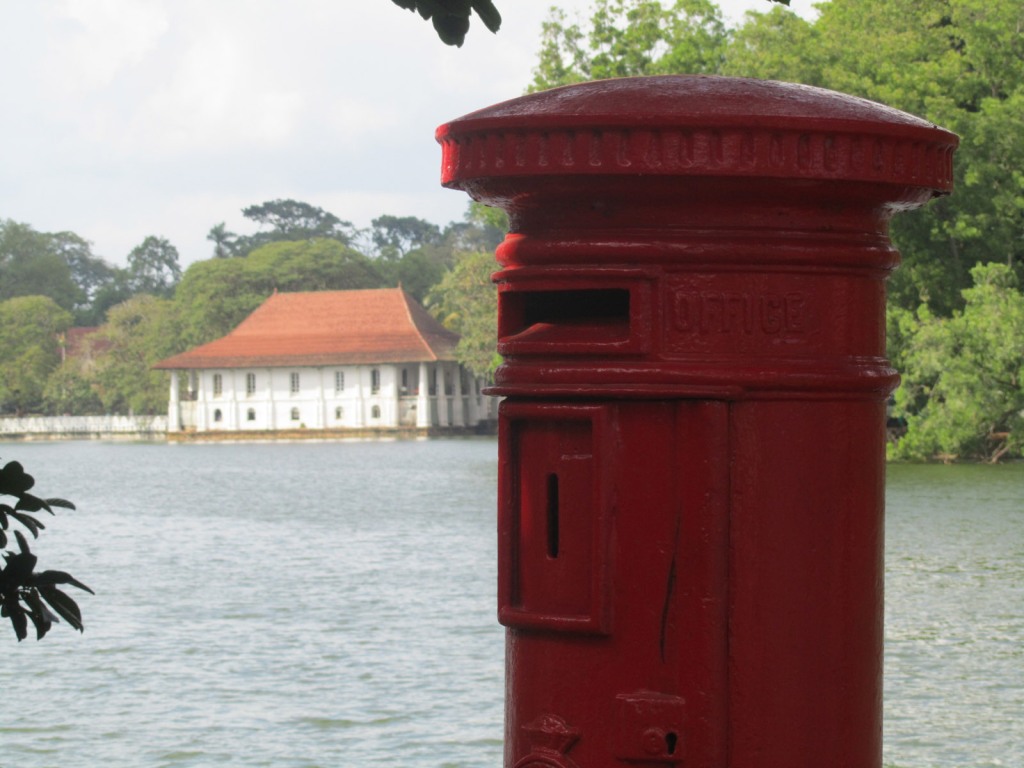

The Queen’s Hotel is the city’s grand old dame, previously the private residence of the British Governor, and now one of the most splendid and historic hotels in town. It was converted into a hotel in 1869 and has been operating ever since.
The road next to the Queen’s Hotel was as frantically busy as the other side of the lake was quiet. This is Kandy Road looking north.

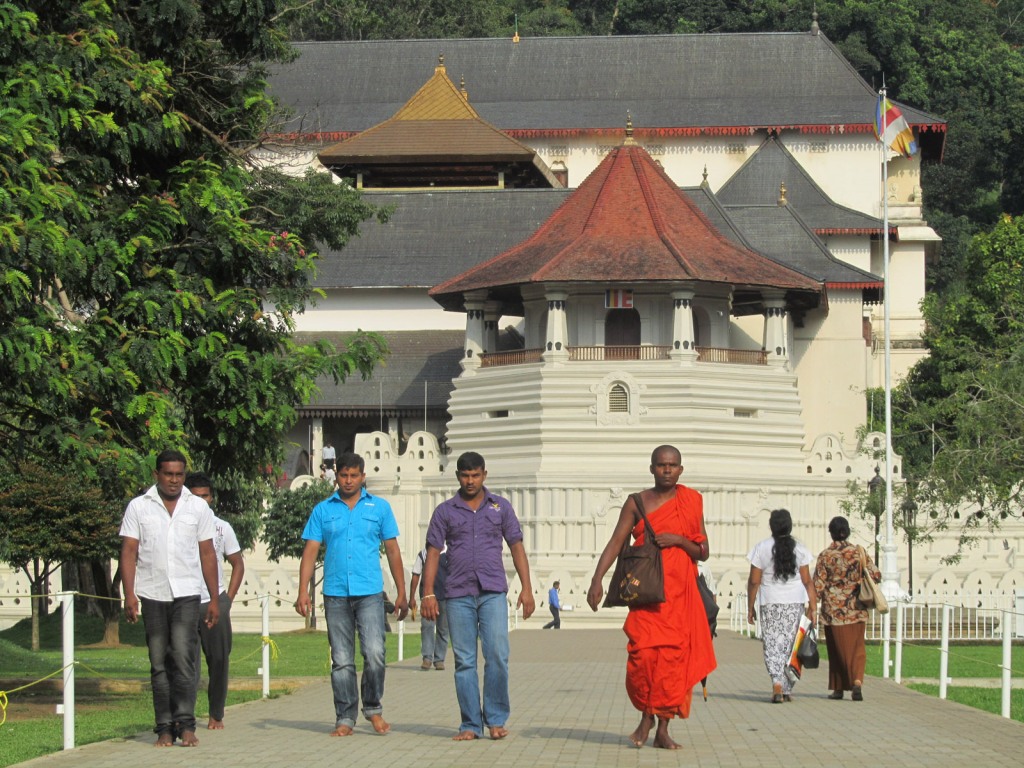
Heading towards the Temple of the Tooth. Within is a relic of the tooth of the Buddha, after which the temple is named. It was completed in 1595 making it much younger than the relic it contains.
A detail of an elephant’s head carving on the path towards the temple. The elephant population of Sri Lanka is recovering after a low point of around two thousand in the 1960s, but was well over seven thousand by the late 2010s.

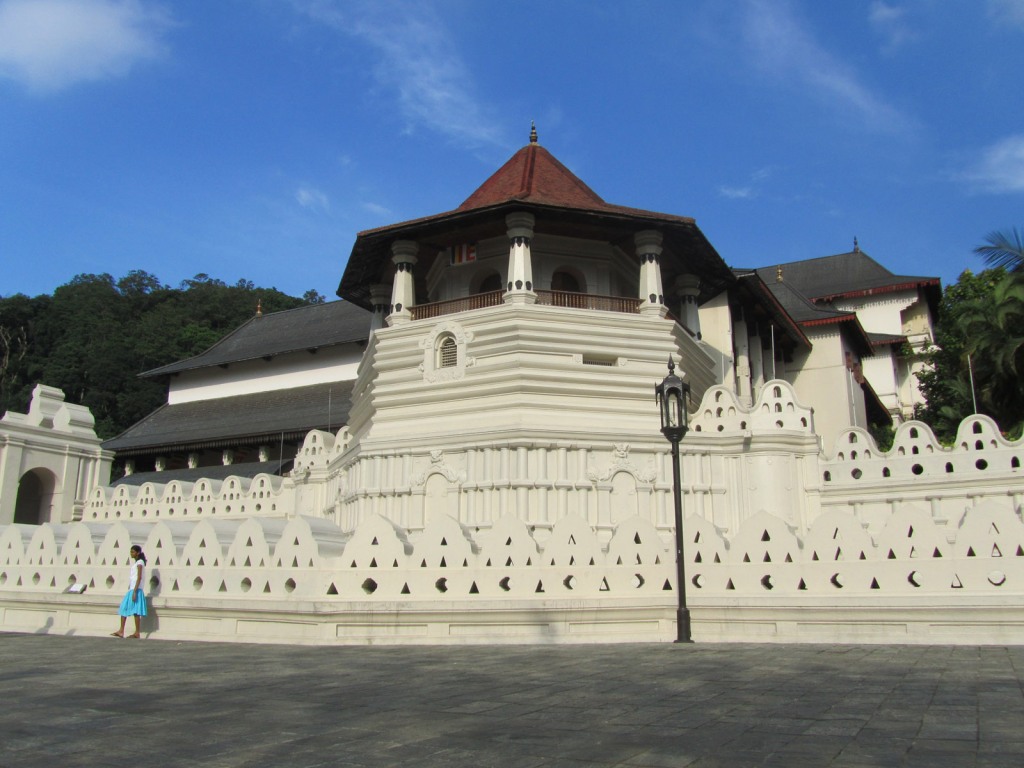
The Temple of the Tooth is one of the most sacred sites in Sri Lanka, yet was subject to terrorist attacks on more than one occasion. In 1998 the octagonal tower and façade were extensively damaged by a truck bomb.
The central area of the temple, with the shrine hosting the sacred relic itself.
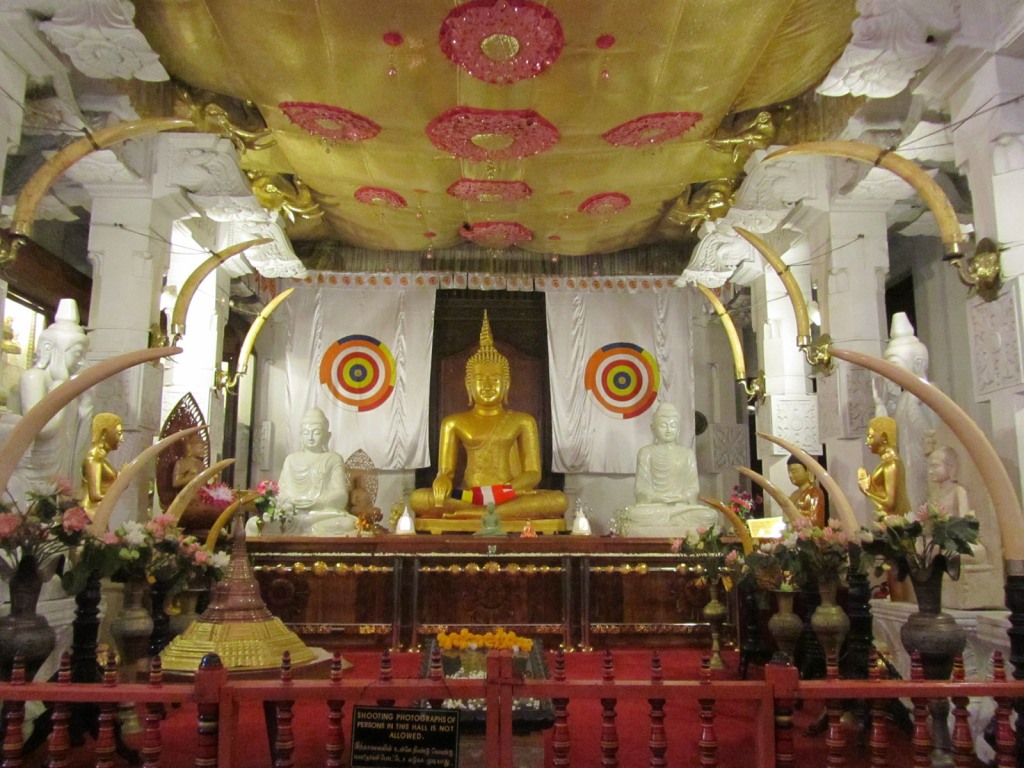
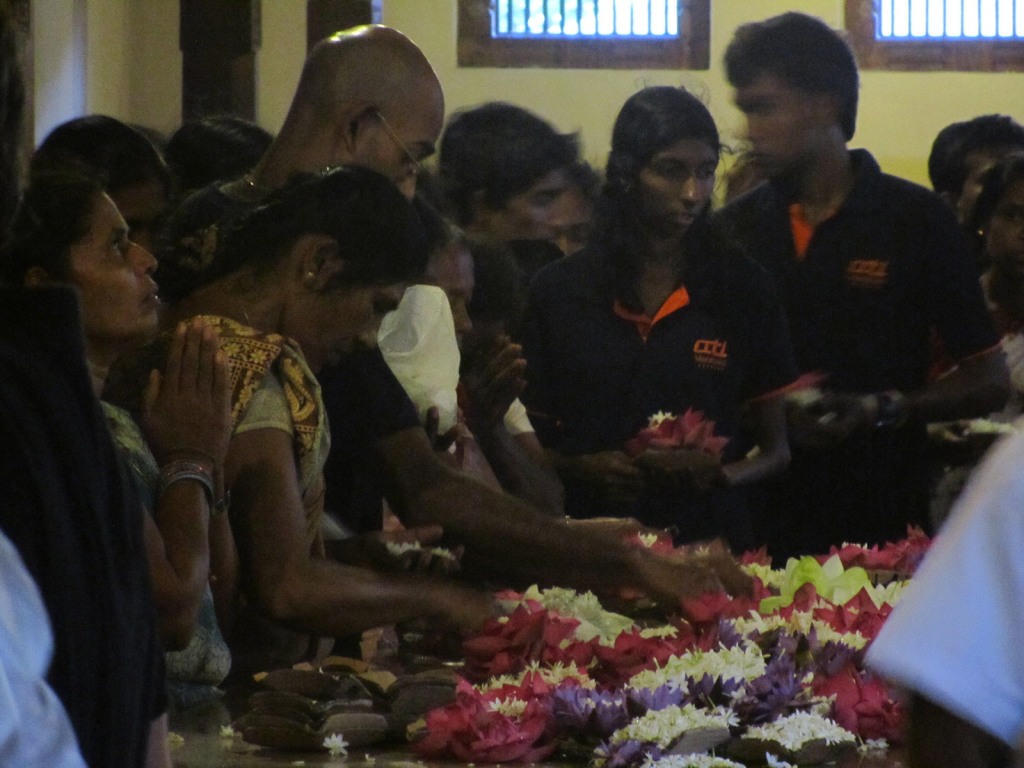
Inside the temple, the reverence that the site holds for worshippers was very clear.
Detail of a Buddha carving inside the temple, this one looks quite new.


The temple was also home to Maligawa Raja, a tusker elephant who served for over fifty years until his death in 1988. He was declared a national treasure, appears on the 1,000 Rupee bank note, and such was his influence on the local community that his remains were preserved for posterity.
Back in the city, Kandy Clock Tower is another local landmark, just opposite Kandyan Muslim Hotel. It was unveiled in 1950.
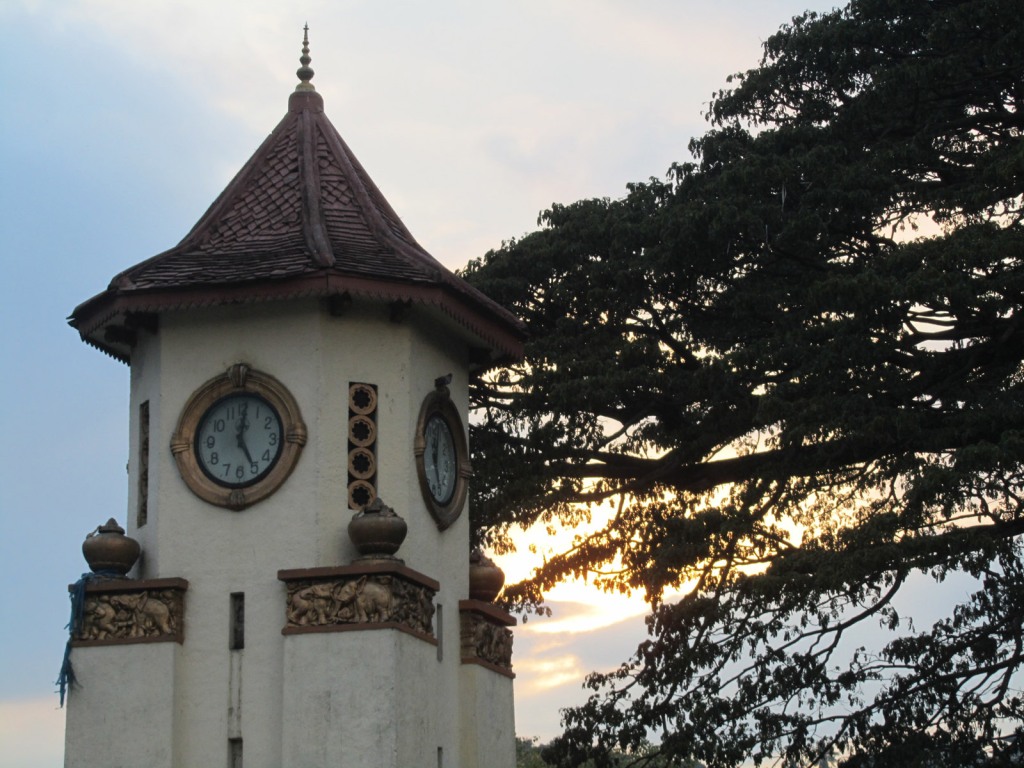

I wandered through some very impressive fruit stalls at Kandy Municipal Central Market before heading for a curry at Kandyan Muslim Hotel, which was delicious.
The main railway line between Kandy and Colombo also acts as a handy thoroughfare for market-goers
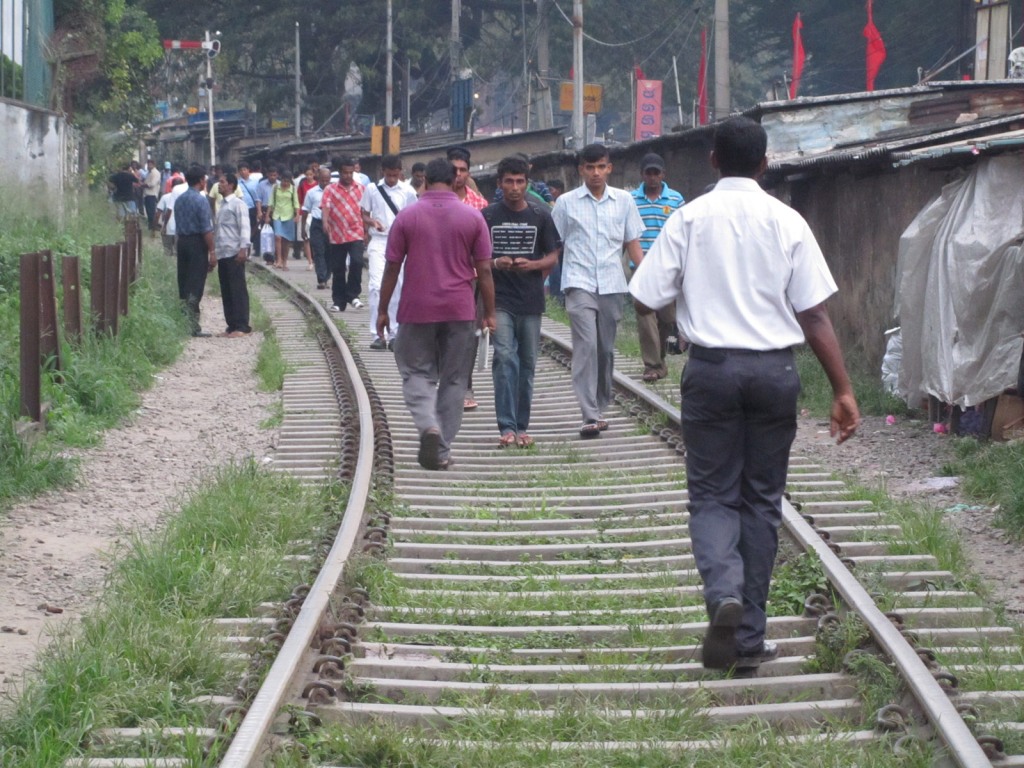
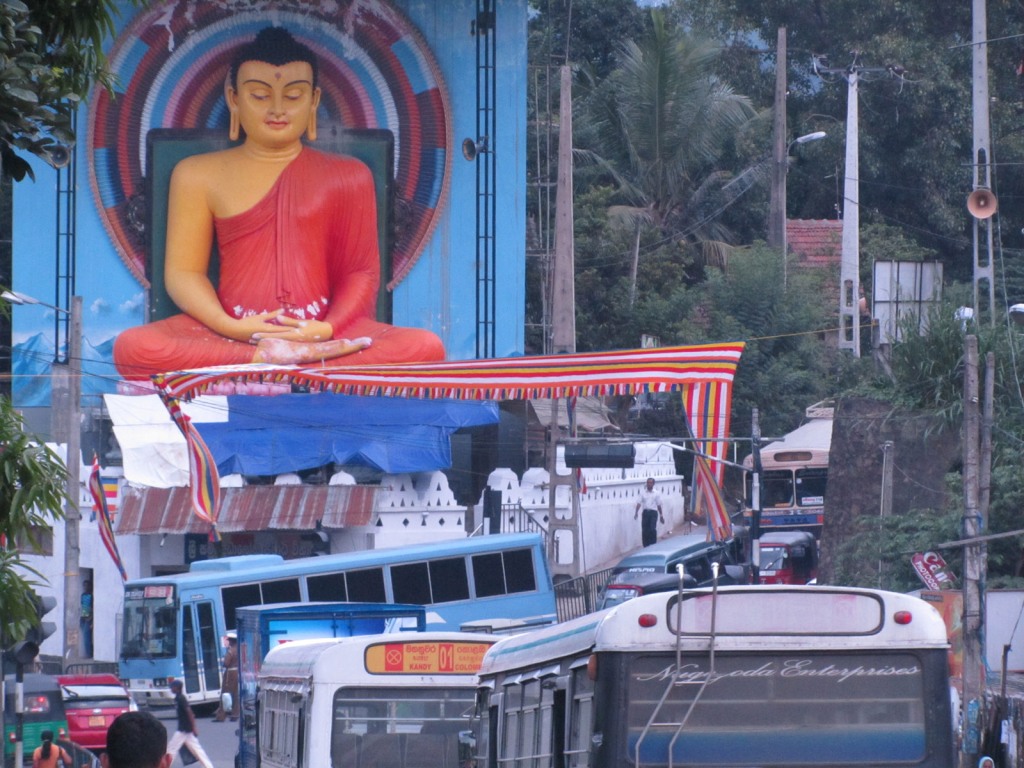
On the main road heading into town by the railway station is a large seated Buddha, quietly surveying the traffic. He fronts Sri Sambuddhaloka Samadhi Temple.
A occasionally glimpsed a significantly larger Buddha on a nearby hilltop, although I didn’t go up for a closer look it was clear that Srī Mahā Bōdhi Temple is quite colossal. The statue is over 26 metres tall, and has gazed down at the city since 1972.
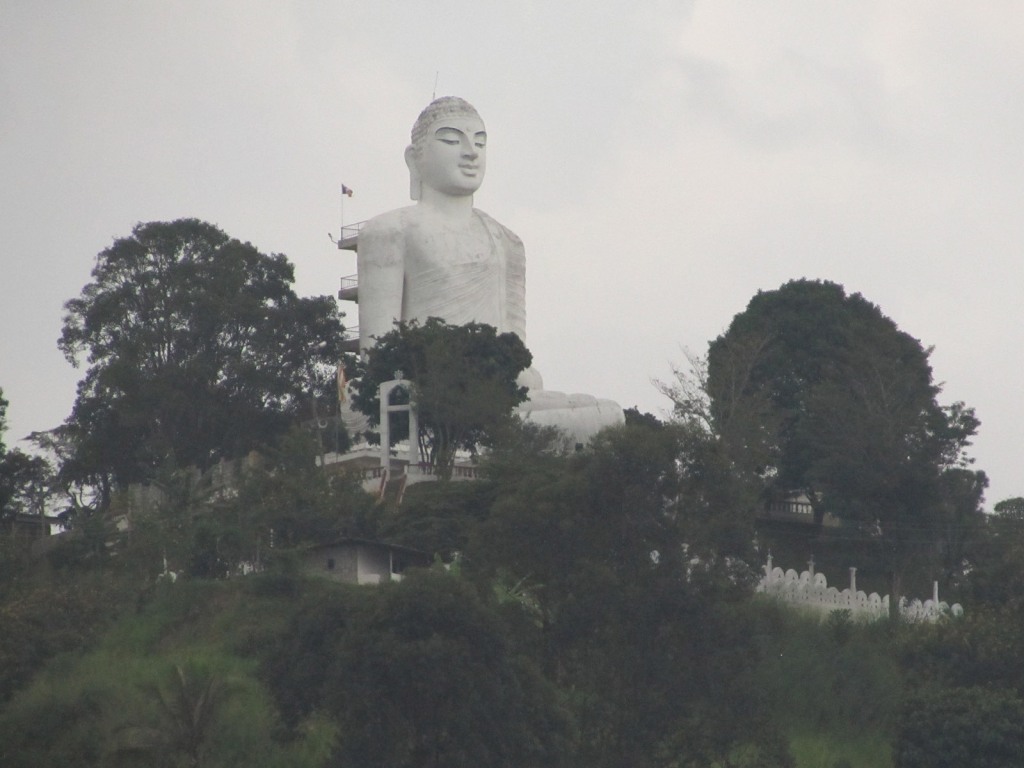
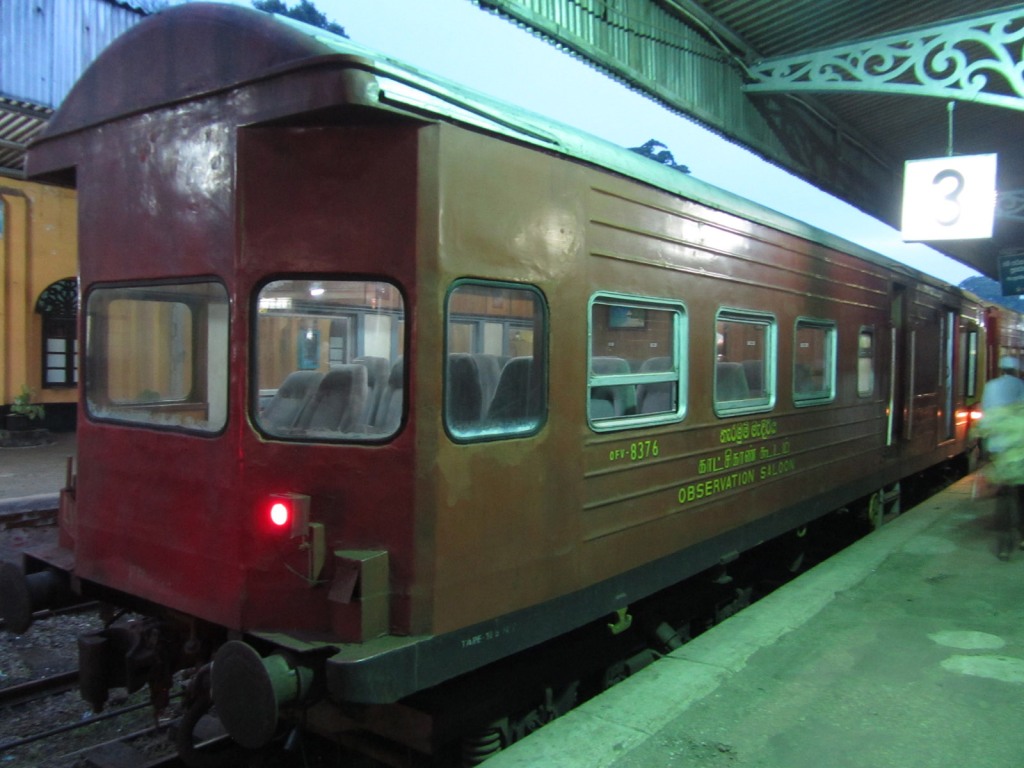
The following day I was up at ridiculous o’clock to get myself a seat in the Observation Car at the back of the train heading down to Colombo. Although very slow, it was perfectly comfortable and not too hot on board, and I wasn’t in a hurry.
The railway track snaked through the jungle on its way down to the coast. I presume that’s a dog trotting along the abandoned platform, but it could be something more exotic?

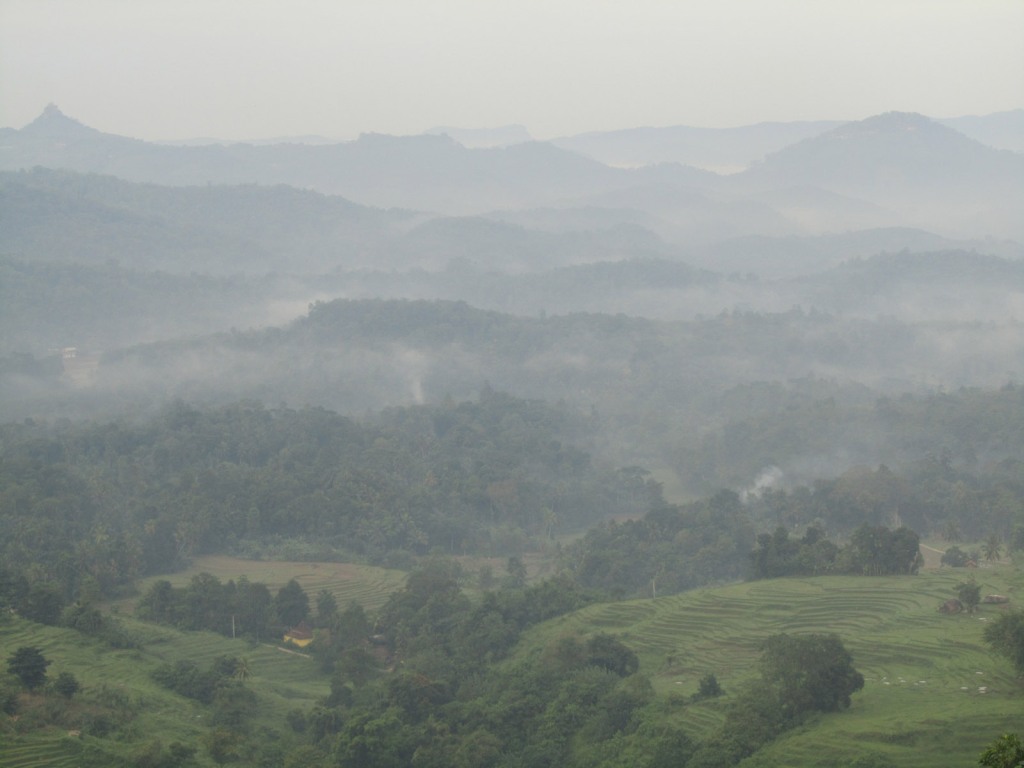
There were very atmospheric views of mist covered hilltops as we descended the line to Colombo.
Created 2013 | Updated 2024
